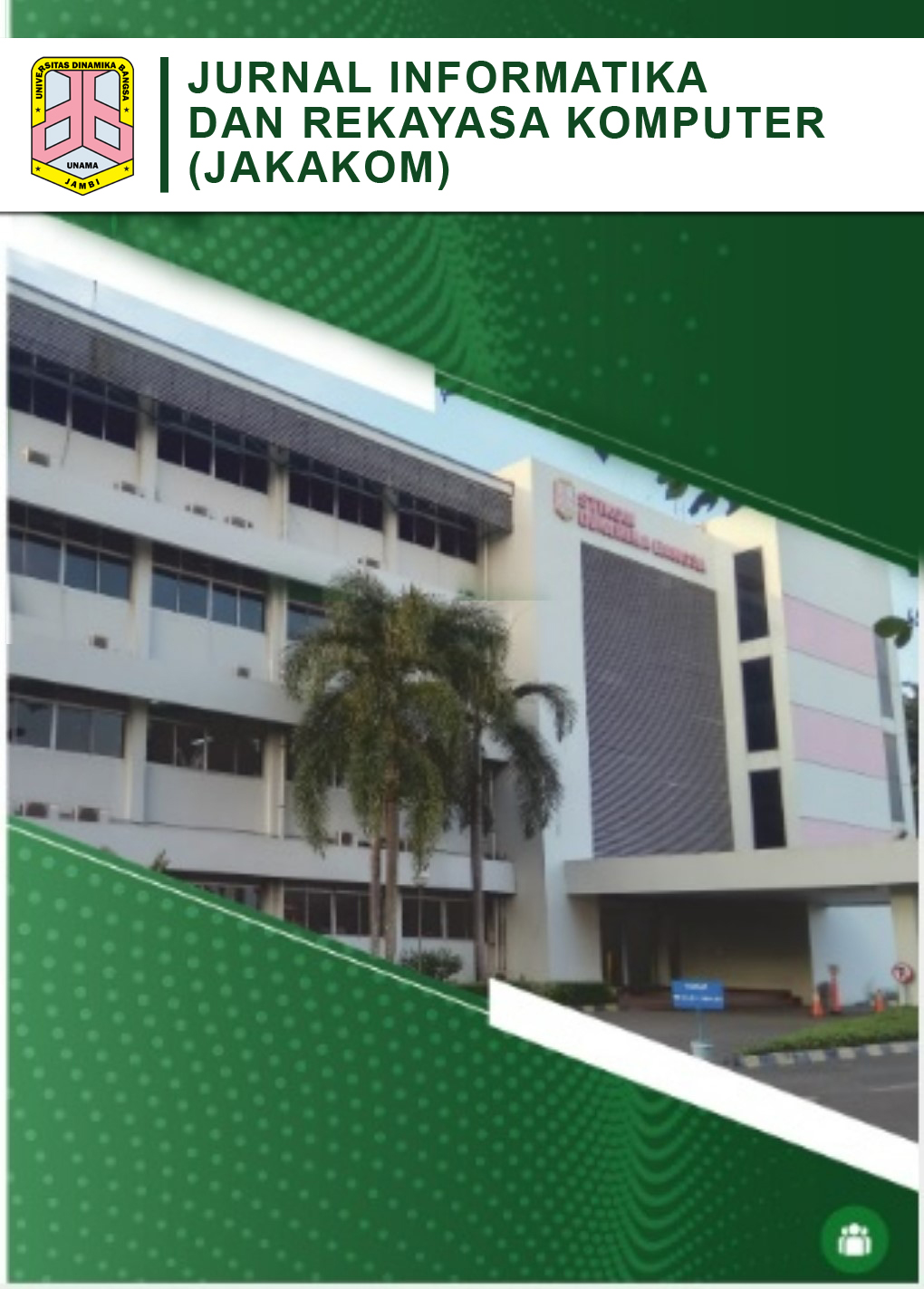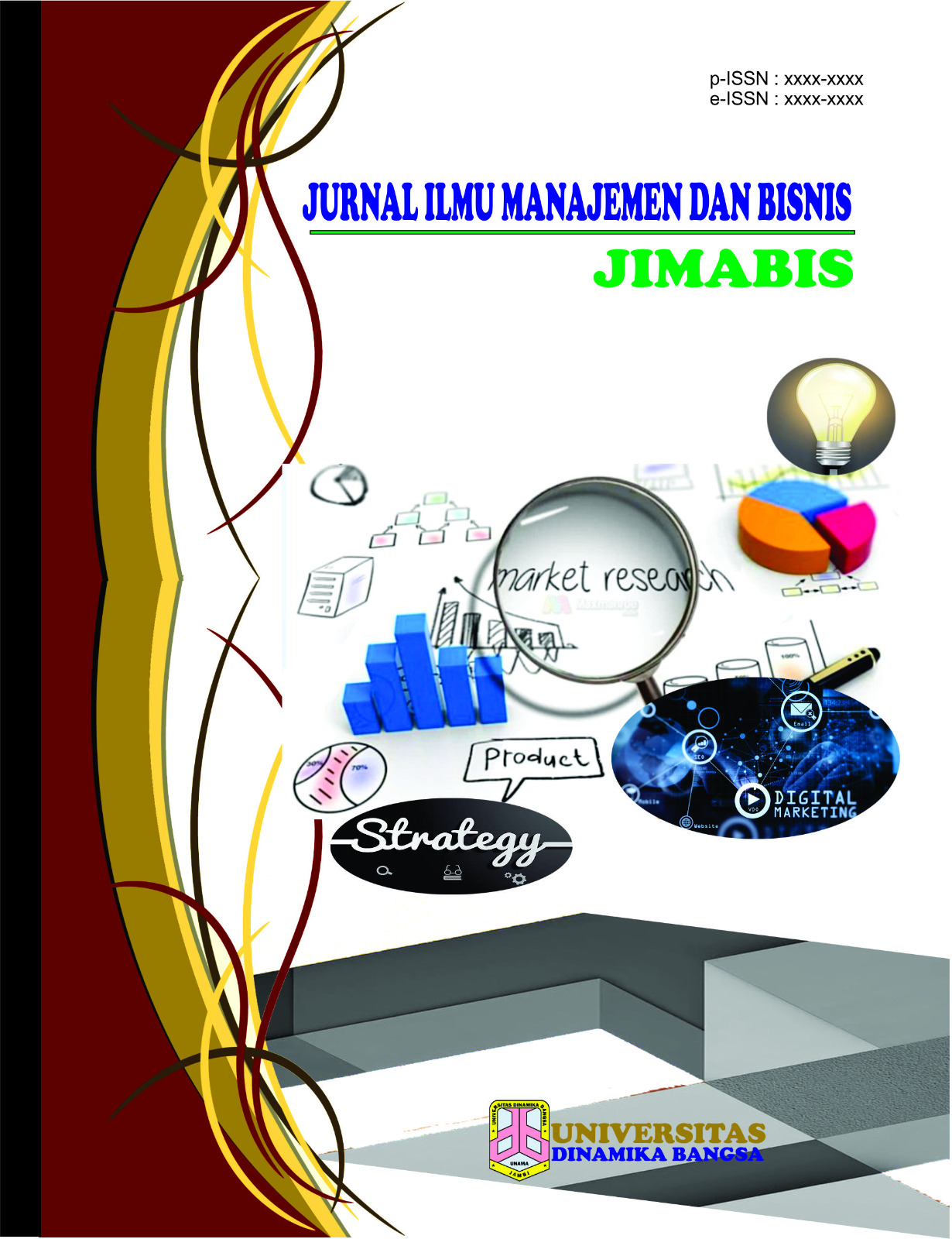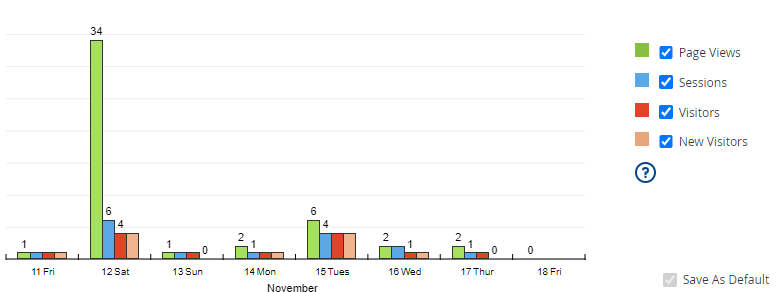Deteksi Serangan DDoS SYN Flood Pada Jaringan Internet of Things (IoT) Menggunakan Metode Deep Neural Network (DNN)
DOI:
https://doi.org/10.33998/jakakom.2024.4.1.1710Keywords:
IoT;DDoS;Deep Learning;DNN;IDSAbstract
The implementation of Internet of Things (IoT) systems and applications is increasingly widespread across various fields. This makes IoT an attractive target for cyber crime, especially Distributed Denial of Service (DDoS) attacks such as SYN Flood. This type of attack disrupts service availability and floods servers, causing them to lose resources. One method for detecting DDoS attacks is through an Intrusion Detection System (IDS). A novel technique in IDS implementation is Deep Learning, specifically the Deep Neural Network (DNN) method, capable of identifying precise mathematical manipulations to transform input into output. Therefore, this research proposes the use of the DNN method to detect SYN Flood DDoS attacks in IoT networks. Testing results from the study, which utilized the CICIoT2023 dataset consisting of 14 files with two labels, DDoS-SYN_Flood and BenignTraffic, provided satisfactory outcomes. Evaluation using epochs with values of 10, 50, and 100 showed that epoch 100 yielded the highest performance. This is evident from the average accuracy rate of 99.36%, precision of 99.44%, recall of 99.75%, and an f1-score of 99.59%.
Downloads
References
S. Soliman, W. Oudah, and A. Aljuhani, “Deep learning-based intrusion detection approach for securing industrial Internet of Things,” Alexandria Engineering Journal, vol. 81, pp. 371–383, Oct. 2023, doi: 10.1016/j.aej.2023.09.023.
W. Najib, S. Sulistyo, and Widyawan, “Tinjauan Ancaman dan Solusi Keamanan pada Teknologi Internet of Things,” Jurnal Nasional Teknik Elektro dan Teknologi Informasi, vol. 9, no. 4, pp. 375–384, 2020, doi: 10.22146/jnteti.v9i4.539.
K. B. Virupakshar, M. Asundi, K. Channal, P. Shettar, S. Patil, and D. G. Narayan, “Distributed Denial of Service (DDoS) Attacks Detection System for OpenStack-based Private Cloud,” Procedia Comput Sci, vol. 167, pp. 2297–2307, 2020, doi: 10.1016/j.procs.2020.03.282.
M. Aljanabi, R. Hayder, S. Talib, A. H. Ali, M. A. Mohammed, and T. Sutikno, “Distributed denial of service attack defense system-based auto machine learning algorithm,” Bulletin of Electrical Engineering and Informatics, vol. 12, no. 1, pp. 544–551, Feb. 2023, doi: 10.11591/eei.v12i1.4537.
Lukman and M. Suci, “Analisis Perbandingan Kinerja Snort Dan Suricata Sebagai Intrusion Detection System Dalam Mendeteksi Serangan Syn Flood Pada Web Server Apache,” Jurnal Teknologi Informasi, vol. 15, no. 2, pp. 6–15, Jul. 2020, doi: 10.35842/jtir.v15i2.343.
Y. Ariyanto, H. A. V. Firdaus, and H. Pramana, “Klasifikasi Jenis serangan DOS dan Probing pada IDS menggunakan metode K-Nearest Neighbor,” Seminar Informatika Aplikatif Polinema (SIAP), pp. 472–476, 2020.
V. K. Rahul, R. Vinayakumar, K. Soman, and P. Poornachandran, “Evaluating Shallow and Deep Neural Networks for Network Intrusion Detection Systems in Cyber Security,” 2018 9th International Conference on Computing, Communication and Networking Technologies, ICCCNT 2018, Oct. 2018, doi: 10.1109/ICCCNT.2018.8494096.
A. E. Cil, K. Yildiz, and A. Buldu, “Detection of DDoS attacks with feed forward based deep neural network model,” Expert Syst Appl, vol. 169, May 2021, doi: 10.1016/j.eswa.2020.114520.
N. Rezaee, S. M. Zanjirchi, N. Jalilian, and S. M. H. Bamakan, “Internet of things empowering operations management; A systematic review based on bibliometric and content analysis,” Telematics and Informatics Reports, vol. 11, Sep. 2023, doi: 10.1016/j.teler.2023.100096.
Ferdiansyah Zulkifli and Handy N, INTERNET OF THINGS (IOT) MEDIA PEMBELAJARAN PRAKTIKUM ERA 4.0. CV. Eureka Media Aksara, 2022.
F. Behmann and Kwok wu., Collaborative Internet Of Things (C-IoT): for future smart connected life and business. Texas: John Wiley & Sons, 2015.
Mambang, BUKU AJAR TEKNOLOGI KOMUNIKASI INTERNET (Internet of Things). Purwokerto: CV. Pena Persada, 2022.
R. Vivin, N. Riza, A. Erna, D. Astuti, M. Pramudia, and D. Rahmawati, FUNDAMENTAL INTERNET OF THINGS (IOT) TEORI DAN APLIKASI PENERBIT CV.EUREKA MEDIA AKSARA. Jawa Tengah: CV. Eureka Media Aksara, 2023.
K. Lone and S. A. Sofi, “A review on offloading in fog-based Internet of Things: Architecture, machine learning approaches, and open issues,” High-Confidence Computing, vol. 3, no. 2, Jun. 2023, doi: 10.1016/j.hcc.2023.100124.
Sharipuddin et al., “Enhanced Deep Learning Intrusion Detection in IoT Heterogeneous Network with Feature Extraction,” Indonesian Journal of Electrical and Engineering and Informatics (IJEEI), vol. 9, no. 3, pp. 747–755, 2021, doi: 10.52549/ijeei.v9i3.3134.

















